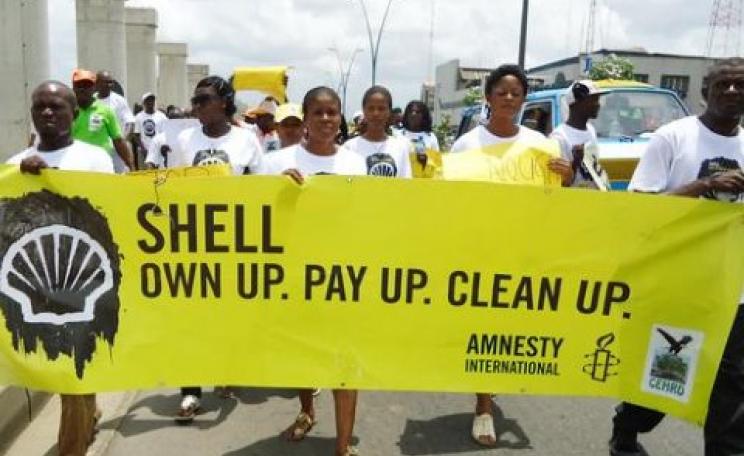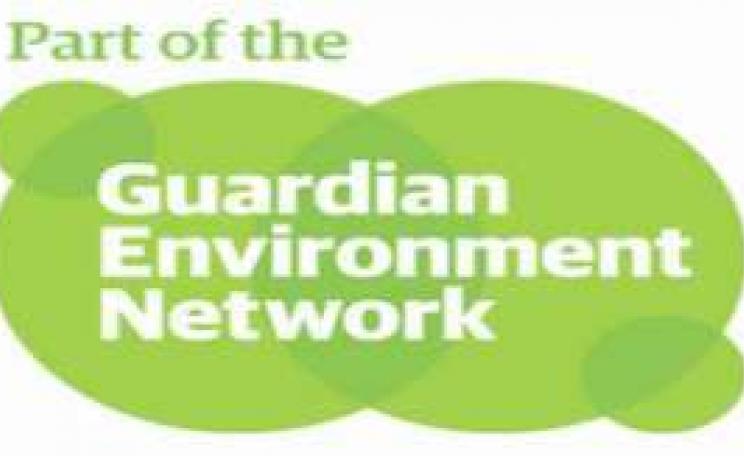Gold mining is one of the most destructive industries in the world in terms of waste and environmental pollution
An unprecedented outbreak of lead poisoning linked to a gold rush has killed at least 200 children in northern Nigeria this year, with a further 18,000 people affected.
Announcing the figures, the UN said it had sent an emergency team to assess the full impact of the 'acute massive lead poisoning' in Zamfara state, where seven villages have so far been confirmed as contaminated. In all cases, villagers had been grinding ore by hand to search for gold when they unwittingly freed lead particles also contained in the rock.
The quantities of lead released into the dust and soil were large enough to kill children – most of the deaths were among under-fives – while also causing deafness, blindness, brain damage and muscular problems.
The US Centers for Disease Control and Prevention, which conducted a preliminary study into the deaths, said that the scale of the problem was 'unprecedented in CDC's work with lead poisoning worldwide'.
More people have died in the affected villages this year than in community-wide disasters anywhere in the world over the past 40 years, according to TerraGraphics, an environmental engineering firm involved in the clean-up operation.
'This is an incredibly serious and worrying situation,' said Lauren Cooney, emergency manager at Médecins Sans Frontières (MSF), which has been helping with the response. In one village 30 per cent of children under five had died this year due to poisoning, the charity said.
'While we still don't know the full extent of the problem, we expect that there are going to be medium- and long-term health effects for people in these villages,' said Cooney.
Lead poisoining
All mining has been banned in Zamfara state for several months as a result of the disaster, and local officials insist the situation is under control, even though their response has been hampered by heavy rains which have made the isolated villages difficult to reach. But new cases of poisoning are still being reported. MSF recently found dangerous levels of lead in two more villages where mining has occurred, and believes the total number of affected people exceeds 30,000.
Sadiq Abubakar Sadauki, special assistant to the governor of Zamfara, said during a telephone interview that ore obtained from a village called Sunke, which contained very high levels of lead, had caused most of the fatalities. 'The problem was not the mining of the gold, it was the processing,' said Sadauki. 'People have no machines to detect gold and other minerals, so they used their hands.'
Local authorities in northern Nigeria were first alerted to the problem in March this year when numerous small children in villages in the Bukkuyum and Anka areas of Zamfara suddenly had convulsions and then died.
Vulnerability of children
Called in to help, MSF doctors initially suspected malaria or meningitis, but when treatments did not work they tested for heavy metals. Results from blood and soil samples showed lead levels so high that they exceeded the machines' upper testing limits.
Children were especially vulnerable to fatal poisoning because of their small size and their tendency to play in the contaminated dust. The rate of deaths among children in the worst-affected villages is more than three times that normally seen in refugee camps during emergencies, the UN says.
MSF has also recorded high levels of lead in adults' blood, which though not immediately fatal could have severe consequences over time, including stillbirths, kidney problems and male sterility.
Under a government-led clean-up project, the contaminated topsoil in two villages has been removed, disposed of safely, and replaced with clean soil. But the process is moving slowly, and there are fears that contaminated water sources will remain dangerous for some time.
The UN emergency team that has just arrived in Zamfara includes specialists from the World Health Organisation and Unicef.
They are equipped with a mobile laboratory, and hope to assess the magnitude of the problem and design a response. The UN said that besides lead, the soil was likely to be contaminated with copper and mercury, which is used by some villagers during the sluicing process to separate the gold from rock particles.
This article is reproduced courtesy of the Guardian Environment Network
| READ MORE... | |
 |
INVESTIGATION Conned for her copper: Zambia pays the price for aid Copper underwires the modern world, running through everything from the gas guzzler to the wind turbine. Any country that finds substantial reserves of the metal ought to consider itself to have struck gold. That is, until you let the World Bank decide how your mines should be run… |
 |
NEWS Canada tar sands industry ignoring toxic river pollution Study contradicts Alberta government and industry claims that pollutants are from natural sources and not from the expanding production of oil from tar sands |
 |
COMMENT Progress is slow, but Zambia might yet see fair copper mining Scottish aid agency SCIAF responds to the Ecologist's article, 'Conned for her copper: Zambia pays the price for aid' |
 |
NEWS Mobile phone metals fuelling Congo war Technology companies should be honest with customers about the origin of the metals in their products, says NGO Global Witness |
 |
NEWS Zimbabwe given 'one last chance' on diamond mining exports Campaign groups on the verge of leaving international diamond trade body because of failures to prevent military takeovers of mines, worker deaths and systematic smuggling |







